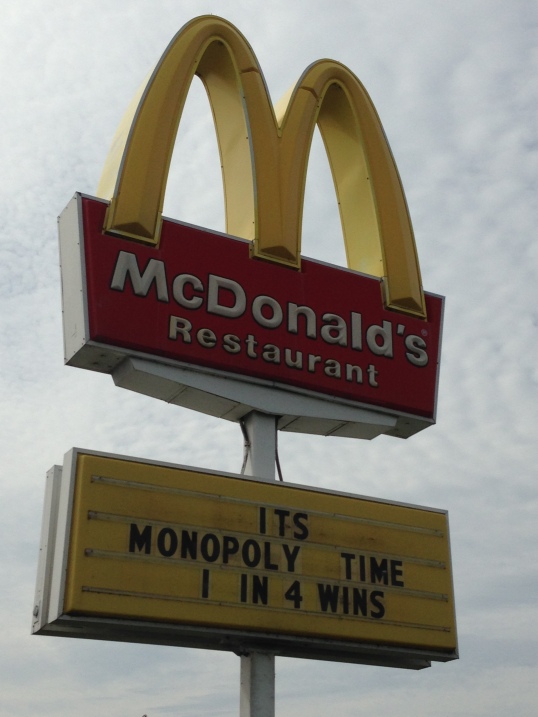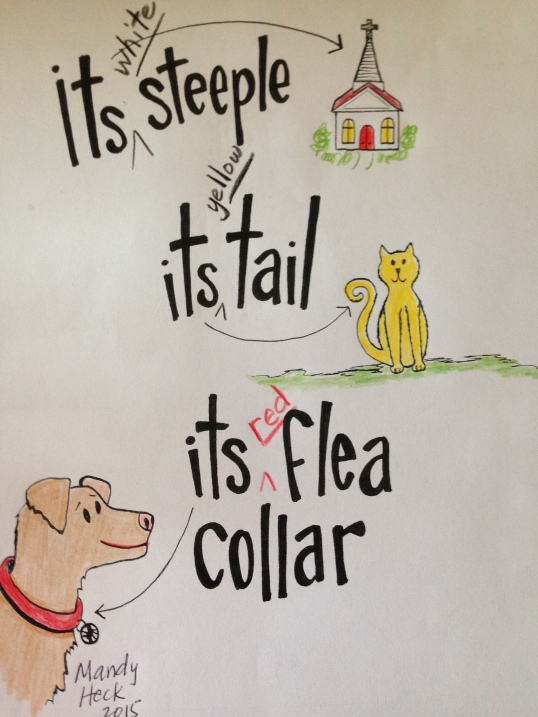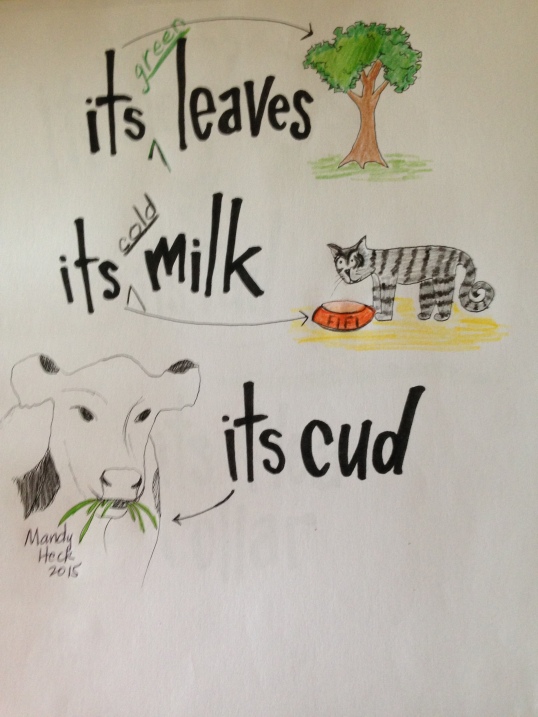It’s and its are commonly confused words in writing. You see examples of this confusion on signs and social media sites every day; yet this common mistake can be easily checked and fixed.
 its = possessive form of the pronoun it
its = possessive form of the pronoun it
it’s = contraction of it is
Three clues for using the possessive pronoun (its) correctly:
- Possessive pronouns never use apostrophes to show possession or ownership (my, his, her, its, our, your, their).
- The possessive pronoun its is usually not found at the beginning of a sentence.
- A noun (possibly with an adjective) follows a possessive pronoun: its sign its yellow sign its big sign its tall sign
Which one: its or it’s?
Check 1: Does the sentence make sense using the contraction it’s (it is) in place of the possessive pronoun its?
It’s Monopoly Time. (It is Monopoly Time.)
McDonald’s sign makes sense with the contraction it’s for it is.
Therefore, McDonald’s made a mistake on its yellow sign. The sign needs the contraction it’s (it is) and it’s (it is) not the possessive pronoun its.
Check 2: Position of its in sentence:
The possessive its is not usually found at the beginning of a sentence.
- McDonald’s made a mistake on its yellow sign.
More sentences with the possessive pronoun its.
- The dog chases its fluffy tail while the kitten chews its paw.
- The tree lost its yellow leaves in the windstorm.
- The members of the church painted its tall steeple and its white front door.
- The store advertised its January sale in its display window.
- His truck lost its extra wheel.
Do you see the position of its in these sentences?
Do you see the adjectives tucked in after its and before the nouns?
Both of these clues help you identify the possessive pronoun its.
These sentences make sense using the possessive pronoun its.
Here’s a tricky one:
- This is my dog. Its name is Blackey. It’s chewing its tasty bone.
The second sentence begins with the possessive pronoun its (an example of a sentence that does start with its.)
The third sentence uses both it’s (contraction for it is) and its (possessive pronoun).
Use these clues to help you use its and it’s correctly.
Posted in
common writing errors,
writing problems,
writing quirks,
writing tips and tagged
apostrophe abuse,
apostrophes and possessive nouns,
Common English errors,
contraction it's. possessive pronoun its,
English lessons,
ESOL,
it's and its confusion,
possessive pronouns,
Worst of the Week






